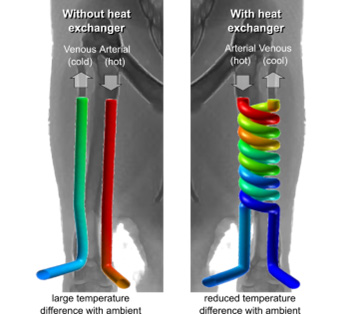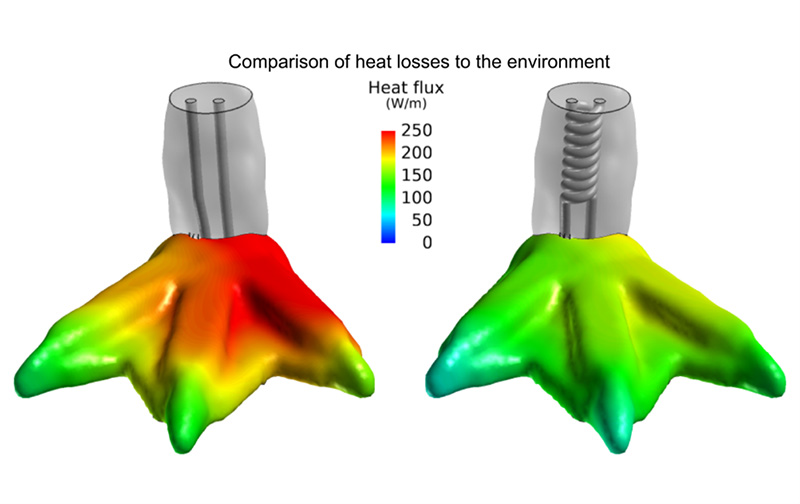Digital Debunking: Why Don’t Penguins’ Feet Freeze?
How can penguins waddle through the Antarctic snow without freezing? Us mammals have a vasoconstriction reflex which will shut off blood flow to our extremities (which is why our fingers turn white in the cold) to minimize heat loss. However, this isn’t ideal during long-term exposure to the elements. Why are we thinking about this? World Penguin Day is on April 25, so what better way to acknowledge the annual migration of our Antarctic friends than with an exploration into why they do what they do? Plus, it’s not often we get to try our simulation technology in the animal kingdom.
Compared to humans, penguins’ bodies are built for the cold. Their feet especially have adapted to cold weather by cooling the blood moving to the feet, so oxygen can be transported while minimizing thermal losses. Their core temperature is roughly the same as ours, so mother nature had to do some clever engineering and incorporated a heat exchanger (Rete Tibiotarsale) within the legs. The arterial blood flow from the heart is cooled down by the cold venous blood returning from the foot (see Figure 1). Since the blood in the exposed foot sits at a lower temperature, there’s less heat loss from the environment.

Figure 1: Approximated blood flow in the penguin leg with and without heat exchange.
Using Altair CFD to Understand Heat Exchangers
To illustrate the impact of the blood flow temperature on the surface heat loss, we designed a simple penguin foot model with internal circulation to compare the benefits of a heat exchanger in the leg (see Figure 2). Using Altair® AcuSolve®, a finite element solver within the Altair CFD™ solution, we computed the net heat transfer to the environment for different scenarios. To model the penguins’ feet, we used Altair® SimLab®, a multidisciplinary simulation environment that accurately analyzes the performance of complex assemblies. While we’d need a detailed scan of an actual penguin to quantify the precise impact, analyzing a simple geometry helps us better understand the physics at play.

Figure 2: Comparison of the impact of cooling blood flow prior to foot circulation (left image minimal heat exchange, right image with twisted arterial and venous blood flow). Model prepared using SimLab and conjugate heat transfer solved using AcuSolve.

Figure 3: Practical examples of a heat exchanger in a ventilation system and a vehicle exhaust system, respectively, used to recover waste heat to improve overall efficiency.
Conclusion
Quite a neat trick for the penguins, but can humans not do the same? While we can’t really change our biology, we do apply these same principles in the machines and buildings that we engineer. From efficient building ventilation to automotive exhaust systems, heat exchangers are used to recover as much energy as possible before releasing waste product into the environment (see Figure 3). With simulation technology, heat exchangers can be optimized to produce the best thermal performance possible, whether it’s for consumer goods, an automotive or industrial application, and more.
To learn more about Altair’s CFD applications, visit https://www.altair.com/altair-cfd-capabilities/.
![]()




